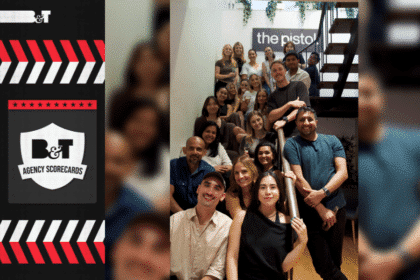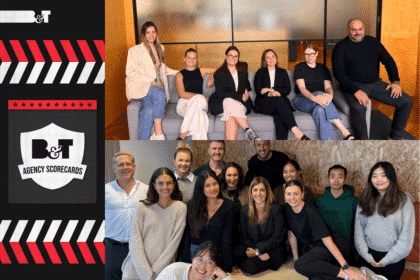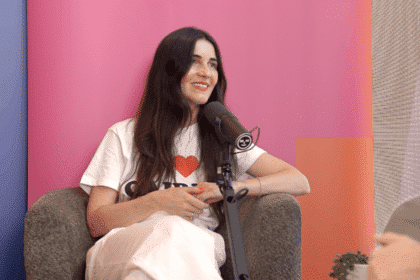ARN’s iHeart has celebrated its fourth birthday, marking a remarkable journey of dominance and growth in the country’s podcasting landscape since its launch on February 25, 2020.
Lead Image: iHeartPodcast creators at 4th birthday celebration
Over the past four years, ARN’s iHeart has firmly established itself in the Australian market. The platform has seen an incredible 150 per cent growth in audience size, soaring from 2.7 million monthly listeners in 2020 to nearly 7 million in 2023, while downloads have almost tripled from 10.5 million per month to over 28 million. ARN’s iHeart has also maintained its position as the #1 Podcast Publisher for 45 consecutive rankers.
So, what makes podcasts so unique? Why has the podcast medium grown so rapidly that it now has a monthly listenership of 9.2 million Australians? Corey Layton, head of digital audio at ARN’s iHeartRadio and iHeartPodcast networks, believes this can be attributed to the diverse types of content and fresh voices available through podcasts that satisfy whatever audiences require. It is no longer a case of just listening to whoever is on the radio.
“The diverse types of content and voices that you can lean into to satisfy whatever niche an individual has, together with the best local and global content, the commuting culture that we definitely have in Australia and the continued promotion, is what has led to the rapid growth in Australia of the entire industry,” Layton said.
There is also a lot to be said about the value of companion podcasts in keeping stories alive. Sports and Television show podcasts are a great example of this. These kinds of podcasts give fans never before possible insight into different sides of something they already love, extending the story beyond what was previously possible.
“I think companion podcasts are really interesting, where you’re getting an insight into sports, for example, from people involved in the game or armchair critics. And the same when it comes to TV shows where, again, it’s ex-contestants, or people with an insight or just punters looking at and commentating on what is happening from week to week. There is possibly an even greater interest in TV because of their time restrictions for episodes. Podcasts provide a really interesting way to make sure that they squeeze that lemon as best they can to maximise the content across multiple content formats, not just the one in which it was intended,” Layton said.
In many ways, podcasting is no longer just about sitting down and having an opinion on something; it’s about finding your audience and for audiences, it’s about finding someone you want to listen to every day or week, someone who you almost feel as if you know despite never actually having met them. The old premise that worked so well in radio continues now in a much more nuanced way, with audiences able to select the kind of content they want to consume.
“If you think about your favourite TV star or movie star, you have a certain relationship with them or an understanding of who they are. But the moment you flip to a podcast talent, who you choose to listen to weekly, you start to pick up on interesting nuances about their life. You believe that you know them well, and you feel like you have this relationship with these people because you have an insight into what they get up to daily, what they’re thinking, and how they act. And that unique relationship that you have with your favourite podcast talent is why they are so influential,” Layton said.
This influence means there is so much more potential for advertising in podcasts than ever thought possible. The amount of advertising dollars being invested into the podcasting industry is continually growing, but still, the average run time of a podcast versus the advertising content is still relatively low. According to Layton, there is still plenty of room for advertising to enter the podcasting space without that ratio, that keeps listeners coming back, being disturbed.
“I think the podcasting industry, from an advertiser perspective, has held this unfair heritage that is the Wild West when it comes to insights and demographics. However, the way the industry has been propelled over the last few years and the types of insights we have right, down to how many people with gym memberships are listening to the casefile True Crime podcast, for example, can help guide advertisers as to what the best content is or who the best influencers are to talk about their product or service. And also be able to see the attribution of how many people heard that ad that then converted through to their website and purchased a product or service. All of those elements now exist in podcasts, which is why the growth is definitely set to continue to thrive over 2024 and beyond,” Layton said.
To commemorate the milestone, a special event was held in Melbourne where many of the network’s experts and creators gathered for a Valentine’s Day lunch to celebrate the fourth birthday and showcase the strength of iHeart’s offering.
“We just had a great big Valentine’s lunch with all of our talents who celebrate our fourth birthday. We didn’t get all of them, but we got a bunch of them together. Having a large majority of our talents together to help really reflect on how incredible the last four years are. And the incredible flight of talent that we have is definitely something that makes the team and I really proud of what we have achieved over the last four years,” Layton said.








